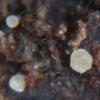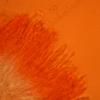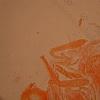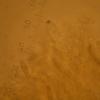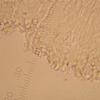
07-01-2026 17:29
 Marc Detollenaere
Marc Detollenaere
Dear Forum,On a barkless Populus I found some smal

10-11-2021 17:33
 Riet van Oosten
Riet van Oosten
Add-on topic http://www.ascofrance.com/forum/7059

07-01-2026 10:24
 Danny Newman
Danny Newman
Pezicula sp. on indet. hardwood Appalachian Highl

07-01-2026 10:05
 Danny Newman
Danny Newman
cf. Chaetospermum on XylariaCosby Campground, Grea

02-01-2026 17:43
MARICEL PATINOHi there, although I couldn't see the fruitbody, I

04-01-2026 17:45
 Stephen Martin Mifsud
Stephen Martin Mifsud
I was happy to find these orange asmocyetes which

03-01-2026 13:08
Niek SchrierHi all,We found groups of perithecia on a Lecanora
helotiaceae ?
michel hurtu,
23-02-2009 20:47
En forme de coupe ou coussinet ,sessile, 0,2 à 1 mm de diamètre,en troupe sur une petite branche de pin noir.
spores septées 10-12x2,5-3
asques 70x10
paraphyses septées 65x2,5 parfois légèrement enflées au sommet
I+ visible q'après passage dans KOH.
J'avais pensé à Phaeohelotium subcarneum , mais les spores ici sont septées.
merci de votre aide.
michel hurtu
Hans-Otto Baral,
23-02-2009 22:40

Re:helotiaceae ?
Hi Michel
that will be very difficult to resolve. First, if you tried to identify with Breitenbach & Kränzlin, that subcarneum there is Hymenoscyphus/Phaeohelotium imberbis.
Yours has a Calycina-type of apical ring and therefore should belong in the Hyaloscyphaceae. Important are the oil drops in the spores which are quite large.
It could be a Calycina. but the only one I have with 1-septate spores on conifer: "Septopezizella" oreadum, has spores with only few small LBs.
Could you please check whether the ring is hemiamyloid (red in Lugol)? And whether the asci have croziers? Further, could you make a mount in water without pressing, in order to see the living asci and especially paraphyses and their contents? Are there any short hairs on the exterior?
Zotto
that will be very difficult to resolve. First, if you tried to identify with Breitenbach & Kränzlin, that subcarneum there is Hymenoscyphus/Phaeohelotium imberbis.
Yours has a Calycina-type of apical ring and therefore should belong in the Hyaloscyphaceae. Important are the oil drops in the spores which are quite large.
It could be a Calycina. but the only one I have with 1-septate spores on conifer: "Septopezizella" oreadum, has spores with only few small LBs.
Could you please check whether the ring is hemiamyloid (red in Lugol)? And whether the asci have croziers? Further, could you make a mount in water without pressing, in order to see the living asci and especially paraphyses and their contents? Are there any short hairs on the exterior?
Zotto
Stip Helleman,
23-02-2009 23:41

Re:helotiaceae ?
Hi Michel & Zotto,
I was thinking about pseudohelotium sordidulum but there are the spores too short, croziers are present for sure, you can tell from the CR photo with 2 CR+ attachment points.
Stip
I was thinking about pseudohelotium sordidulum but there are the spores too short, croziers are present for sure, you can tell from the CR photo with 2 CR+ attachment points.
Stip
Hans-Otto Baral,
24-02-2009 00:25

Re:helotiaceae ?
yes, Stip, Pseudohelotium is a good idea. But I also can't remember a species with such short spores. Croziers +, yes, clearly!
Zotto
Zotto
michel hurtu,
24-02-2009 15:01
michel hurtu,
24-02-2009 15:07
Hans-Otto Baral,
24-02-2009 16:43

Re:helotiaceae ?
Hi Michel
fine, the asci are hemiamyloid (nicely red). The paraphyses I am not sure, look a bit like being guttulate. I am not sure that they are still alive because they lie too much over another. Perhaps you should better have slightly squashed, sorry :-(
And I have still not at all an idea about the genus, sorry. If you wish you can send it to me, but I cannot promise anything.
Zotto
fine, the asci are hemiamyloid (nicely red). The paraphyses I am not sure, look a bit like being guttulate. I am not sure that they are still alive because they lie too much over another. Perhaps you should better have slightly squashed, sorry :-(
And I have still not at all an idea about the genus, sorry. If you wish you can send it to me, but I cannot promise anything.
Zotto



